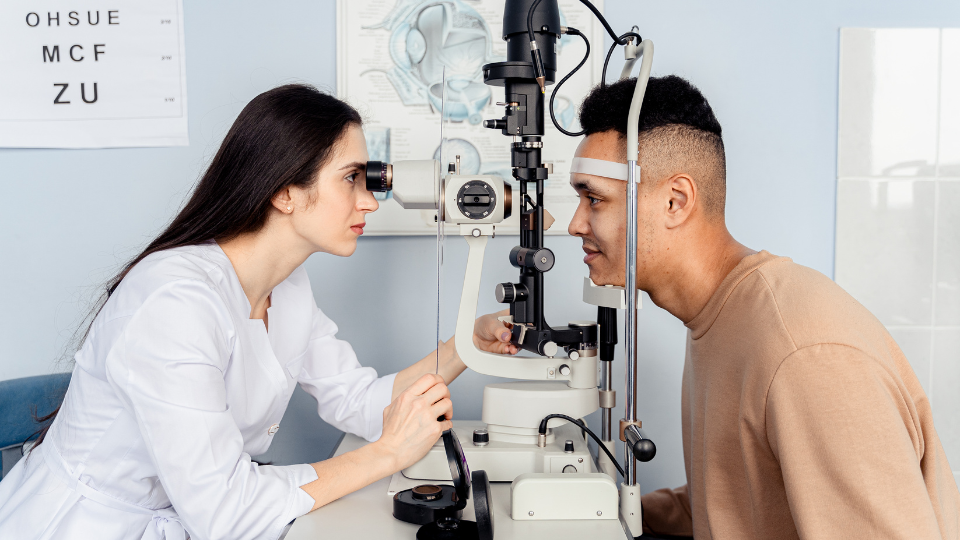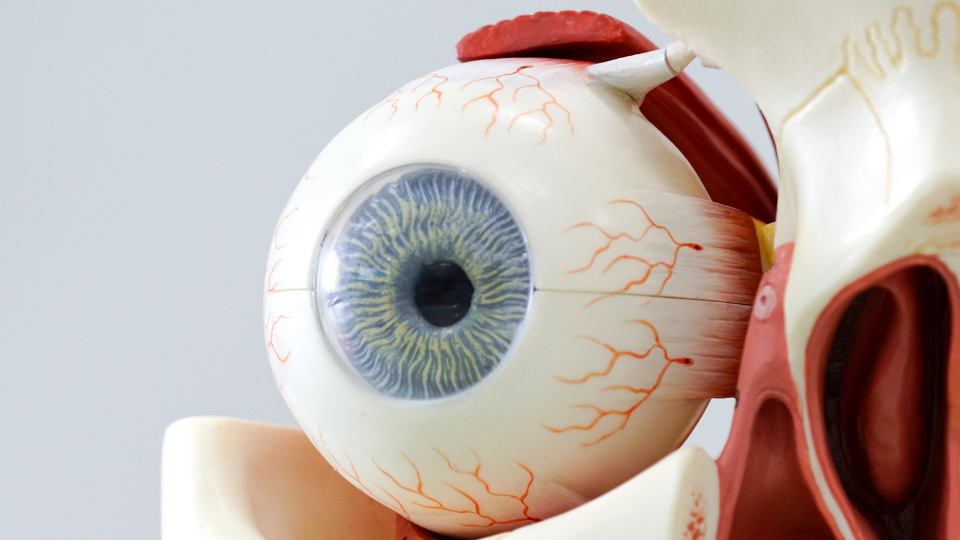Utah Becomes the First State to Let AI Handle Prescription Refills
Utah just made history: it's the first US state to let an AI system renew prescriptions on its own. The program covers people who are already taking medications for [...]
Read More
Medically reviewed by Alan Lucks | MD, Alan Lucks MDPC Private Practice - New York on July 6th, 2025.
When experiencing an eye issue, many individuals wonder where to seek help. The options can range from urgent care facilities to specialized eye clinics. Understanding the best course of action can make a significant difference in effectively addressing your symptoms. This article explores whether urgent care is a viable option for eye-related problems, what types of conditions can be treated, and how to navigate your healthcare choices.
 Understanding Urgent Care
Understanding Urgent CareUrgent care centers are designed to provide immediate care for non-life-threatening conditions that require prompt attention. They serve as a convenient alternative to emergency rooms, offering extended hours and often shorter wait times. However, not all urgent care facilities are equipped to handle specific eye issues. Many urgent care centers are staffed with healthcare professionals trained to assess and treat a range of conditions, ensuring that patients receive timely and effective care without the long waits typically associated with emergency departments.
In addition to their accessibility, urgent care centers often have on-site diagnostic tools, such as X-rays and lab tests, which can aid in the evaluation of various medical issues. This capability allows for a more comprehensive approach to treatment, as patients can receive the necessary care without needing to be referred to multiple locations. For those with busy schedules or who may not have a primary care physician, urgent care centers offer a valuable resource for efficiently managing health concerns.
Urgent care centers can address a variety of minor eye problems, such as:
Conjunctivitis: Often referred to as pink eye, this condition can be caused by allergies, bacteria, or viruses. Symptoms may include redness, itching, and discharge, which can be effectively managed with appropriate treatment.
Minor Eye Injuries: Scratches or minor trauma to the eye can be evaluated and treated. These injuries, while painful, are often manageable without the need for surgical intervention, allowing for a quicker recovery.
Foreign Objects: If something gets lodged in the eye, urgent care can often assist in safely removing it. Trained professionals can utilize specialized tools to ensure the removal process is both safe and effective, minimizing the risk of further injury.
While these conditions are manageable at urgent care, more serious issues may require specialized care or immediate attention from an ophthalmologist. It's important for patients to be aware of their symptoms and the potential severity of their eye problems, as early intervention can significantly impact outcomes.
Not all eye problems are suitable for urgent care. If you experience any of the following symptoms, it's crucial to seek emergency medical attention:
Sudden vision loss or changes in vision
Severe eye pain
Signs of a serious injury, such as bleeding or a penetrating wound
In these cases, time is of the essence, and visiting an emergency room or a specialized eye care facility is advisable to prevent permanent damage. Additionally, symptoms such as flashes of light or floaters can indicate more serious conditions, such as retinal detachment, which requires immediate evaluation by an eye care professional. Understanding the distinction between urgent and emergency care can empower patients to make informed decisions about their health and well-being, ensuring they receive the appropriate level of care when they need it most.
In recent years, telehealth has emerged as a convenient option for many healthcare needs, including eye issues. Services like Doctronic provide immediate access to medical professionals who can evaluate symptoms and recommend treatment.
Telehealth services are particularly beneficial for individuals who may have difficulty accessing traditional healthcare facilities. Whether due to transportation issues, time constraints, or health concerns, virtual consultations can bridge the gap. Patients can receive guidance from the comfort of their homes, making it easier to address eye problems without the need for a physical visit. This is especially crucial for the elderly, who may have mobility issues, or for those living in rural areas where specialist services are limited. The ability to consult with an eye care professional without the stress of travel can significantly enhance patient satisfaction and adherence to treatment plans.
While telehealth may not replace an in-person examination, it can still provide valuable insights. A qualified healthcare professional can assess symptoms, offer advice, and determine whether a follow-up visit to urgent care or a specialist is necessary. For instance, through Doctronic, patients can receive a comprehensive evaluation based on the latest medical knowledge, allowing for informed decisions about their eye health. Moreover, telehealth platforms often utilize advanced technology, such as high-resolution imaging and diagnostic tools that can aid in the assessment of conditions like diabetic retinopathy or glaucoma, ensuring that patients receive a thorough evaluation even from a distance. This integration of technology not only enhances the quality of care but also empowers patients to take an active role in managing their eye health.
Understanding common eye issues can help individuals make informed decisions about where to seek care. Here are some prevalent conditions and their typical treatments:
Allergies can lead to red, itchy, and watery eyes. These symptoms can often be managed with over-the-counter antihistamines or eye drops. However, if symptoms persist, a healthcare professional can provide additional treatment options. In some cases, allergy testing may be recommended to identify specific triggers, which can help in developing a targeted treatment plan. Additionally, avoiding allergens, such as pollen or pet dander, and maintaining a clean environment can significantly reduce the frequency and severity of allergic reactions.
Dry eyes can result from various factors, including prolonged screen time, environmental conditions, or underlying health issues. Treatment may involve artificial tears, lifestyle changes, or prescription medications. Telehealth services can assist in diagnosing dry eye syndrome and recommending appropriate management strategies. Furthermore, incorporating regular breaks during screen use, using humidifiers in dry environments, and staying hydrated can contribute to improved eye moisture. For individuals with chronic dry eye, specialized treatments such as punctal plugs or intense pulsed light therapy may help enhance comfort and eye health.
Infections such as conjunctivitis or blepharitis require prompt attention to prevent complications. Urgent care can often provide the necessary medications, but telehealth services can also guide patients in managing symptoms and determining if an in-person visit is warranted. It's essential to note that maintaining proper hygiene, including regular hand washing and avoiding contact with the eyes, can help prevent the spread of infections. Additionally, warm compresses can alleviate discomfort associated with inflammation, promoting healing and providing relief from symptoms. For recurring infections, a thorough evaluation by an eye care specialist may be necessary to rule out underlying conditions or to adjust treatment protocols.
When faced with an eye issue, deciding between urgent care and telehealth can be a challenging decision. Here are some factors to consider:
If symptoms are mild, such as minor irritation or redness, telehealth may be the best option for initial evaluation. Conversely, if symptoms are severe or accompanied by other concerning signs, urgent care may be more appropriate. For instance, symptoms like sudden vision changes, severe pain, or discharge could indicate a more serious condition that requires immediate attention. In such cases, visiting an urgent care facility ensures that you receive hands-on examination and treatment, which can be crucial for preserving eye health.
Consider the availability of local urgent care facilities and their capabilities. Not all urgent care centers have the same resources, so it’s essential to know what conditions they can treat. In contrast, telehealth services like Doctronic can provide immediate access to medical expertise, regardless of location. This is particularly beneficial for individuals living in remote areas where urgent care facilities may be limited. Additionally, telehealth can often offer extended hours, making it easier to consult with a healthcare professional outside of traditional office hours, which is especially helpful for busy individuals or those with unpredictable schedules.
For ongoing issues or conditions that require monitoring, telehealth can offer continuous support. Patients can establish a relationship with healthcare providers who understand their history and can provide tailored advice over time. This ongoing relationship can be particularly advantageous for managing chronic eye conditions, such as glaucoma or diabetic retinopathy, where regular check-ins are necessary to monitor progression and adjust treatment plans. Furthermore, telehealth platforms often allow for seamless sharing of medical records and test results, enhancing the continuity of care and ensuring that patients receive the most informed guidance possible.
Urgent care can be a suitable option for certain eye issues, particularly minor injuries or infections. However, for more complex conditions or ongoing management, telehealth services like Doctronic offer a convenient and effective alternative. By understanding the capabilities of both urgent care and telehealth, individuals can make informed decisions about their eye health and receive the care they need in a timely manner.
 Additional Resources
Additional ResourcesFor those seeking more information about eye health, consider the following resources:
Doctronic - For telehealth consultations and AI-powered medical advice.
In addition to these valuable resources, it is important to stay informed about the latest advancements in eye care technology. Innovations such as digital eye strain assessments and advanced imaging techniques are becoming increasingly accessible, enabling individuals to monitor their eye health more effectively from the comfort of their own homes. Furthermore, many organizations offer webinars and workshops that delve into specific topics, such as macular degeneration, glaucoma, and the impact of nutrition on eye health. Engaging with these educational opportunities can empower individuals to make informed decisions about their eye care.
Moreover, community outreach programs often provide free or low-cost eye screenings, particularly in underserved areas. These initiatives not only help to identify potential vision problems early on but also raise awareness about the importance of regular eye exams. By participating in such programs, individuals can gain access to essential resources and expert advice, ensuring that they remain proactive in maintaining their eye health. Remember, knowledge is a powerful tool in the fight against vision-related issues.
When it comes to eye health, timely and personalized care is crucial. Doctronic is at the forefront of revolutionizing eye care with our AI-powered doctor, providing you with immediate, accurate, and personalized medical advice. Say goodbye to waiting rooms and hello to fast, smart, and personal care that remembers every detail about your health. Whether you have a pressing eye concern or need a second opinion, Doctronic's AI doctor is available 24/7 in all 50 states for free AI consultations and affordable telehealth video visits. Join over 10 million people who have experienced the most personal care at their fingertips. Skip the line. Talk to an AI Doctor Now, for free.
Most minor infections, injuries, and irritations can be effectively treated at urgent care within hours rather than waiting days for an ophthalmologist. Seek emergency care immediately for sudden vision changes, severe pain, or chemical burns to prevent permanent damage. If you're unsure about the severity of your symptoms, Doctronic can help you determine the right level of care needed.
Utah just made history: it's the first US state to let an AI system renew prescriptions on its own. The program covers people who are already taking medications for [...]
Read MoreUnderstanding Mounjaro and Its UsesMounjaro is a prescription medication commonly prescribed for managing type 2 diabetes. It belongs to a class of drugs that help regulate [...]
Read MoreUnderstanding Hydrocortisone Uses and DosagesHydrocortisone is a versatile medication primarily used to reduce inflammation and suppress the immune system in various [...]
Read More